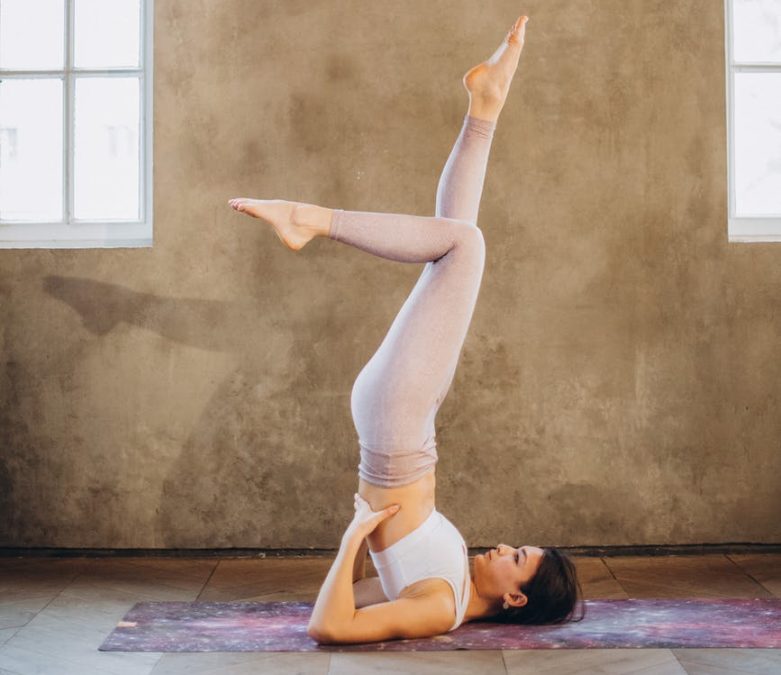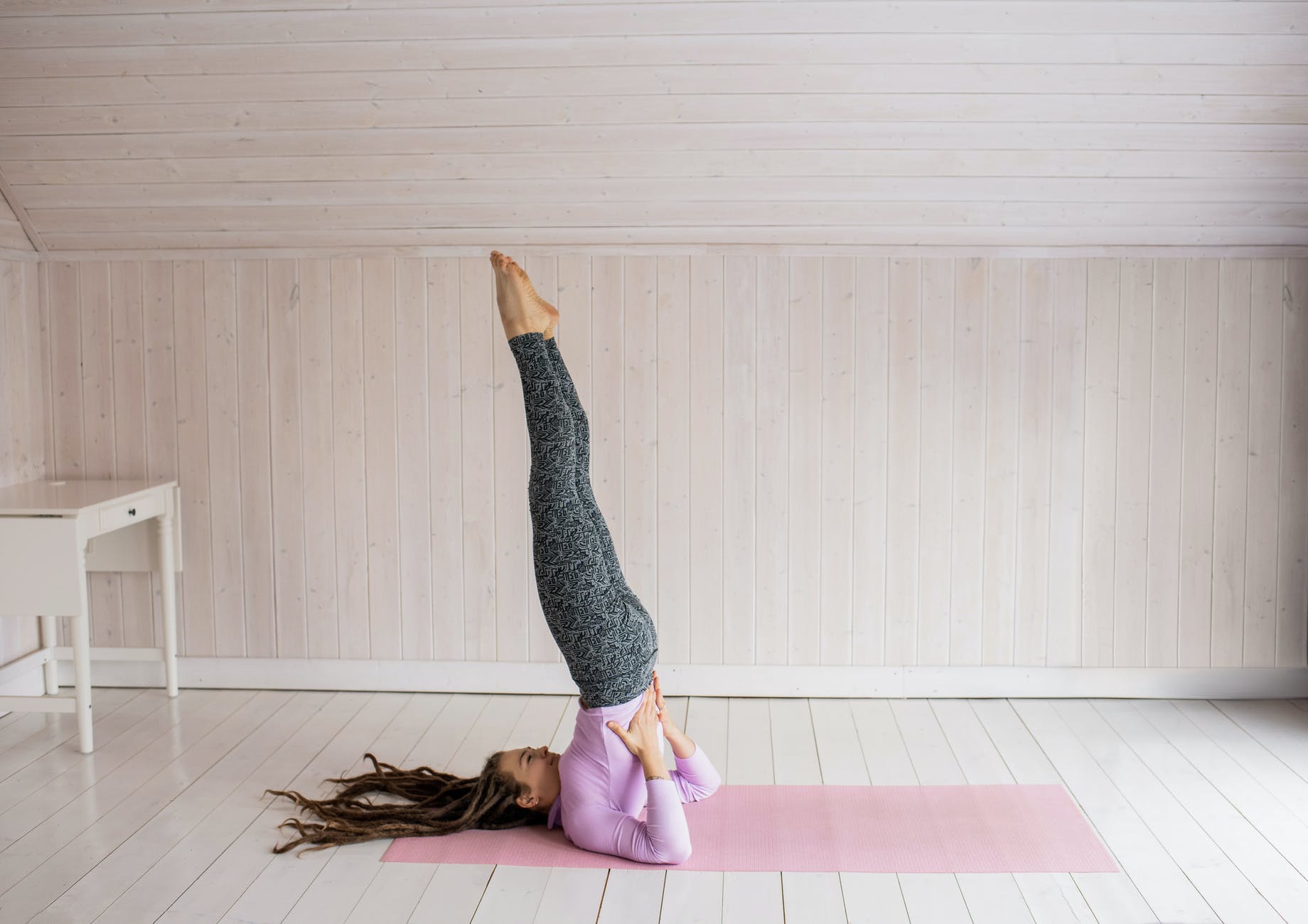Introduction
Are you curious about the mystical practice of Sarvangasana? Wondering about its benefits, safety, and how to perform it with precision? Look no further! In this comprehensive guide, we delve into the depths of this yoga pose, providing step-by-step instructions, and insights into its duration and timing, as well as highlighting its numerous benefits and precautions. Whether you’re a beginner or an experienced practitioner, this article serves as a gateway to mastering the art of Sarvangasana.
Sarvangasana Information
| Pose Name | Sarvangasana |
| Sanskrit Name | सर्वाङ्गासन |
| IAST | sarvāṅgāsana |
| English Name | Shoulder Stand |
| Origin | Medieval Period |
| Difficulty Level | Intermediate |
| Type | Inverted Posture |
| Chakra | Vishuddhi |
Origin and History
This pose was described in Yoga Makaranda of T. Krishnamacharya in 1934. It does not mean that it is a modern yoga posture. It is one of the variants of Viparita Karani that was well described in the medieval yoga texts. Though the book was published in in1934, Shoulder Stand was part of his teaching and practice well before its publication.
Moreover, in 1924, Sri Kuvalayananda, a yoga researcher and therapist, prescribed this pose to Mahatma Gandhiji as a treatment for High Blood Pressure. It was a historical sequence of letter correspondence on this yoga pose between Sri Mahatma Gandhiji and Sri Kuvalayananda.
In 1926, Sri Kuvalayananda published a research article on this pose in his yoga journal Yoga Mimamsa,
Dr. Paul Brunton in his book titled The Secret Search in India narrates his travel history of India during the nineteen-twenties. He met a yogi in Madras who demonstrated this yoga pose and explained its benefits.
Swami Sivananda Saraswati described this posture in his book Yoga Asanas, published in 1931,
Observing the above points, we may easily conclude that this posture had been in practice in different parts of India. Though classic texts did not describe this posture by its name, we could not call this a modern yoga pose. It was traditionally in practice from time immemorial, of course without any documentation.
Sarvangasana Meaning
The Sanskrit word Sarva means all. Aṅga means limbs and āsana is a yoga pose. Therefore literally, it means All Limbs Yoga Pose. This is because the performance engages all limbs of the body.
Dr. Paul Brunton calls it All Body Pose. Swami Sivananda calls it All Members Pose.
Sri. S. Mazumdar in his book Yoga Exercises for Health and Cure (1941) calls it Pan Physical Pose.
However, it is popularly known as the Shoulder Stand.
Queen Of Asana
Sarvangasana is often referred to as the Queen of Asanas in yoga. This nickname highlights its significance and prominence among the various yoga postures. Just as a queen holds a central and revered position in a kingdom, this yoga pose holds a central place in the practice of yoga due to its multitude of benefits and its ability to positively impact the entire body. It is considered a foundational pose that offers a wide range of physical, mental, and spiritual benefits, making it deserving of its regal title.
Sarvangasana Procedure
Precautions and Contraindications
Pregnant ladies should avoid this posture. Moreover, ladies undergoing menstruation cycles also should stay away from this practice.
Though this practice helps to reduce high blood pressure, the patient should take note of one important point. During the performance of this posture, blood pressure temporarily elevates by 15 to 20 points. It may be harmful to those who have elevated pressure already. Hence, they should bring down the pressure by some other means before attempting this practice. Or they should consult their doctor.
Furthermore, those who have health conditions like cardiac issues, stroke, and issues in their upper spine and shoulder should also avoid this posture.
Preparatory Poses
Before attempting this posture, getting mastery over the following yoga poses will be more helpful.
- Plough Pose
- Locust Pose
- Viparita Karani
Sarvangasana Steps
Step 1
Lie supine on a blanket or yoga mat. Place the hands on the sides of the body. Take a couple of deep breaths.
Step 2
Lift your legs vertically and keep them straight. Then raise the buttocks and spine with palms in support of the buttocks. The upper arms should be on the floor and the elbows are folded. Now, the palms and upper arms should share the weight of the body along with the upper spine.
Step 3
The chin and the chest should press each other. Ensure that the legs and lower trunk are in a straight line. Fix the eyesight on the big toes. Breath normally. This is the final position. Keep this position as long as it is comfortable.
Step 4
To release the position, bring down the buttocks first. Then fold the legs horizontally. Finally, bring the whole of the legs down slowly.
Duration
The duration may be thirty seconds to one minute for beginners. Advanced students can practice for up to ten minutes. However, they should increase the duration in a phased manner.
Follow Up Poses
It is mandatory to follow up on Shoulder Stand with Matsyasana. If for any reason, one could not follow up with it, any one of the following poses may be considered.
Sarvangasana Variations
There are more than two variants of Shoulder Stand.
Salamba Sarvangasana
Salamba means with support. So it is Shoulder Stand With Support. The pose described above belongs to this type only.
Niralamba Sarvangasana

Niralamba means without support. Hence it is Shoulder Stand Without Support. The main difference between the two is the position of the hands. In this version, the hands are placed on the backside of the body. In one version, palms are clasped and placed on the floor; whereas, in another version, hands are placed on the floor with palms facing down.
Eka Pada Sarvangasana
Ekapada means single leg. In Single Leg Shoulder Stand, one leg is folded.

Sarvangasana Benefits
The benefits of Sarvangasana include the following
Supports the treatment of High Blood Pressure
This pose helps to reduce high blood pressure. However, during the time of performance, it temporarily increases the blood pressure. Recent studies show that it improves Blood Pressure and Heart Rate. As a result, it improves overall heart health. Hence, the practice of this pose can be used as adjunctive therapy for high blood pressure.
Improves Thyroid Health
Thyroid conditions like hyperthyroidism and hypothyroidism develop as a result of hormonal imbalances. Shoulder stand restores the blood flow to the thyroid region and improves its function. As a result, thyroid health improves. The thyroid hormone is vital for the growth and brain development of younger ones. Also, it is more important for metabolism. Hence the health of the thyroid determines the overall health of the body. The regular practice of this posture improves whole-body health.
Moreover, with regular practice, one can easily avoid health conditions like Goiter, thyroiditis, graves diseases, thyroid nodules, thyroid storm, hyperthyroidism, hypothyroidism, and even thyroid cancer.
Improves Parathyroid Health
Parathyroid glands control the level of calcium in the blood and bone. Hence the strength of the bone is determined by the health of parathyroid glands. This posture helps to enhance the strength of the bones in the body by stimulating the said glands. Moreover, for healthy brain functions, the level of calcium is more important. Therefore Shoulder Stand helps to improve brain functions and makes the brain supercharged. As a result, depression is driven out and memory is improved.
Good for Varicose Vein
The varicose vein is a condition of enlargement, swelling, and twisting of the veins usually of the legs. In this health condition, there is a reflex flow of blood through the veins of the legs causing instability in blood circulation. Pregnant women and heavier people are more susceptible to this disorder. Blue or dark purple-colored twisted or spider veins and skin bulging are the symptoms. Normally, it requires no treatment unless it reaches a stage of vein rupture.
The practice of inverted Yoga postures like Shoulder Stand and Head Stand empties the stagnant blood in the veins. Moreover, fresh blood is supplied to the veins. Hence the regular practice of Shoulder Stand helps to treat Varicose veins. At least, the practice checks the progress of the condition getting worse.
Boosts Brain Functions
It increases blood flow to the brain. So it relieves mental stress, depression, and other psychological disturbances. Improved blood flow to the head reenergizes the ears and eyes. This avoids minor ailments in the head region.
Revitalizes Sexual Functions
This Posture improves conditions like male Erectile Dysfunction and feeble erection. Also, it improves impotence. Moreover, it is good for maintaining celibacy. It revitalizes the organs degenerated by sexual excesses. It checks wet dreams.
Women Health
For women, it improves ovarian insufficiency. Also, it helps to regularize the periods. This practice restores health impaired by frequent childbirths. It is good for varicose veins due to pregnancy.
Activates Throat Chakra
Regular practice activates the throat center and helps in Kundalini awakening. In this pose, the automatic chin-lock is happening. Hence, it helps activate the throat chakra.
Conclusion
Sarvangasana stands as a pillar of strength and vitality in the realm of yoga, offering physical, mental, and spiritual benefits when practiced with mindfulness and care. By following the provided instructions, understanding its limitations, and honoring your body’s needs, you can harness the transformative power of this pose on your journey toward holistic well-being. Embark on this enlightening practice and experience the union of body, mind, and soul.
